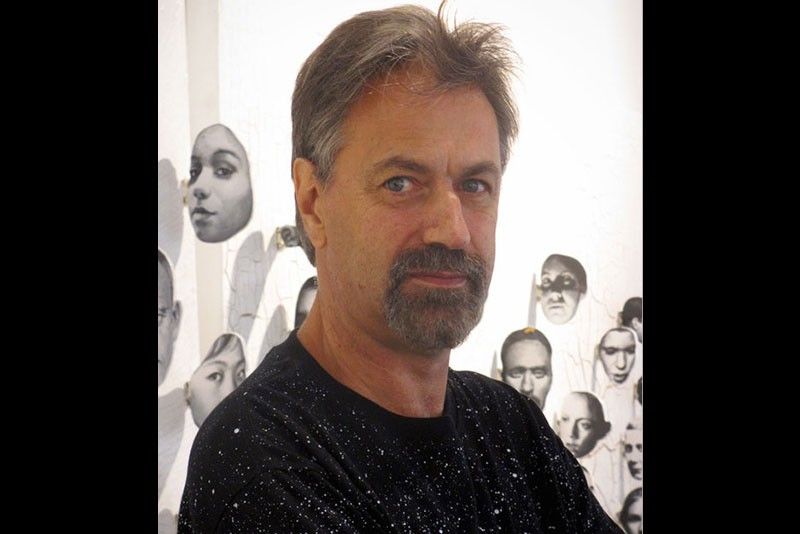Everything in its orbit: Historiography and the masterpiece

MANILA, Philippines - Broadly speaking, at an art fair people are buying art, often expensive art, because they think it is good. But how do we know when art is “good”? Who says it is good? Do we trust them?
“Masterpiece” and “greatness” are relative terms nowadays. Some people only use these words ironically, as a putdown. Art historians tend to avoid such terms, but Sotheby’s, Christie’s and other auction houses and galleries on the market throw them around with abandon. In a ‘70s art essay, American artist Donald Judd asked why there were no more masterpieces; later on, I would argue, he himself made something we can safely call a masterpiece! But it wasn’t an exhibition of handicraft or skill — more a clearly thought-out and very precise installation.
Perhaps installation is integral now to what we call a masterpiece?
Thinking about what deserves being called a masterpiece today and how we can assess or recognize one — or whether we should call it by another name — is important because we tend to assess what is good by having a notion of what is best. So in music, for example, my notion of what is “best” might be Beethoven and Bob Marley. That is a personal choice, but a massive amount of people would agree that Beethoven is the most adventurous, compelling composer and I think there may by quite a few others who, like me, believe Bob Marley and The Wailers to be the best live band they’ve ever seen! I gauge everything else I hear against that.
We have tended, over the last 150 years, to judge a masterpiece by its revolutionary character — its newness or radicalism, like Picasso’s “Demoiselles d’Avignon” or De Kooning’s “Woman No. 1.” But does that apply today, when we no longer have a clear sense of art history as a series of progressive moves? Probably not.
“In the lecture, I want to suggest how we can think about what is ‘best’ nowadays.”
The quote above is Mr. Godfrey’s response when I asked him about the motivations for his forthcoming lecture, “Masterpieces in Contemporary Art,” for Art Fair Philippines 2017. I honed in on his last question, one that suggests a suspicion of periodization and, consequently, the historiography of art, to wit: “Does that — judging a masterpiece or a laudable work of art by its radicalism/newness — apply now when we no longer have a clear sense of art history as a forward progression?”
Art history’s privileging of breaks from tradition as watersheds is one of the most familiar biases of the discipline known to most. As a self-reflexive exercise, I recall my art historiography professor, Roberto Paulino, asked our class to read the oft-referenced (but rarely read in its original) 1948 Edades and Tolentino debates — published in a broadsheet — which purportedly crystallized the dichotomy between the Modernists and the Conservatives. We were then asked to summarize their debate in one to two paragraphs. The idea was to allow biases, values and agendas to surface in our writing and become open to scrutiny. It was also a cleverly designed method of comparison between myself and classmates who, I imagine, were also wrestling with their own translations and versions of accustomed histories. I included that assignment below as a reflection on Godfrey’s question and as a limited attempt to challenge my own proclivities regarding a much-vaunted episode in Philippine art history. Edades and Tolentino’s six-article-long exchange totals around 13,500 words and is clearly uneven: the ratio is 4:2, with Edades writing (and drawing) the bulk of the articles. To constrict myself further (while, hopefully, still fulfilling the purpose of the task), I decided to “equalize” the rebuttals/propositions by summarizing the articles into one sentence each, regardless of length.
* * *
The debate begins with Edades advancing a call to yield to the inevitable force that is Modern Art and illustrating the “Modern Art” family tree, which — in a conventional art historiographical move — stresses the role of Impressionism and the artist Cezanne. Tolentino responds to Edades by criticizing Modern Art’s “distorted” aesthetic, Edades’ supposed ignorance of Classical art methods and, in an impassioned closing paragraph, how artists’ attitudes and dispositions are reflected in their work.
In a lengthy rebuttal, Edades addresses Tolentino’s article point by point, taking pains to discuss his perceived “correctness” in using specific terms (there is a hint of what we would now call a “globalized subjectivity”), concepts, icons, objects and personalities of art. In a second article, Edades continues his lecture on Modern Art and flexes his Western Art History muscles, culminating in a view of Modern Art as a means for Philippine art to finally “claim (its) place in the art galleries of the world.” The last of Edades’ three-part article rounds up his arguments by introducing nine of his “13 Moderns,” offering quick and condensed descriptions of their practices as “progressive painters” (and therefore adding kindling to the canon) which then establishes his belief that the Philippine can be a rich artistic “resource” of the west, and could be considered at par with the rest of the Oriental artists. (This, of course, reads painfully familiar to us now as we witness sustained abuses of free market policies that use the tenets of globalization to benefit, neither the ecology nor the economy, but the wealth of the few.)
Tolentino then ends the exchange with an article that reinstates how distortion lacks, by its very nature, beauty, and could not, therefore, be considered art; and he counters Edades’ initial claims (as illustrated in the family tree) that Modern Art is rooted in the work of the old masters.















